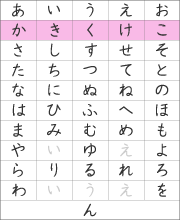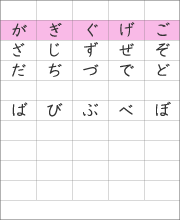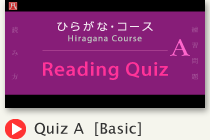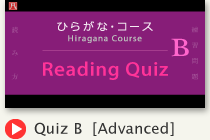Lesson 2: か き く け こ
Reading
How to Read

か, き, く, け and こ are placed in the second row of the 五十音図 [ gojūon-zu | Table of 50 sounds ].
Dakuon
Irregular Pronunciation
Rule 1: o + u = ō
| word | component | pronunciation |
|---|---|---|
| おう (王 king) noun | o u | ō |
| こうこう (高校 high school) | ko u ko u | kōkō |
| くうこう (空港 airport) | ku u ko u | kūkō |
When お colum letters (お こ そ と の ほ も よ ろ ご ぞ ど ぼ ぽ) are followed by う, the pronunciation is [ ō ] (long o not ou).
The spelling in Rōmaji is [ ō ].
Rule 1 (exception): o + u = ou
| word | component | pronunciation |
|---|---|---|
| おう (追う to chase) verb | o u | ou |
There are exceptions. For example, when お colum letters + う is the verb ending, you read as it is written.
Rule 2: e + i = ei / ē
| word | component | pronunciation |
|---|---|---|
| えいが (映画 movie) | e i ga | eiga / ēga |
| えいご (英語 English) | e i go | eigo / ēgo |
When え colum letters (え け せ て ね へ め れ げ ぜ で べ ぺ) are followed by い, the pronunciation often becomes [ ē ] (long e).
This is a natural phenomenon and the degree of this change varies from person to person.
Both ways [ ei ] and [ ē ] are correct.
The spelling in Rōmaji is [ ei ].
Quiz
How to Do
- Hiragana will be shown.
- Read out the letter when it becomes red color.
- You are good enough if you can read correctly the last 10 questions.
This program is a video file. There is no function to check your answer.
Click "YouTube" button below to subscribe our official channel. You can get information on new uploads.
Go to the Writing section.












